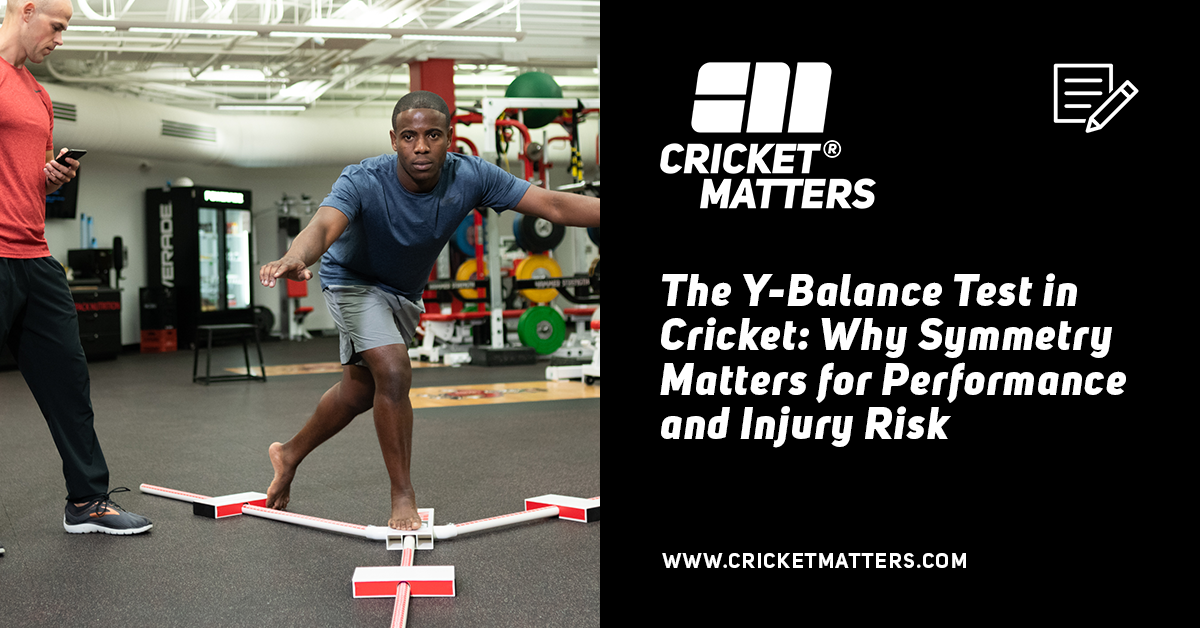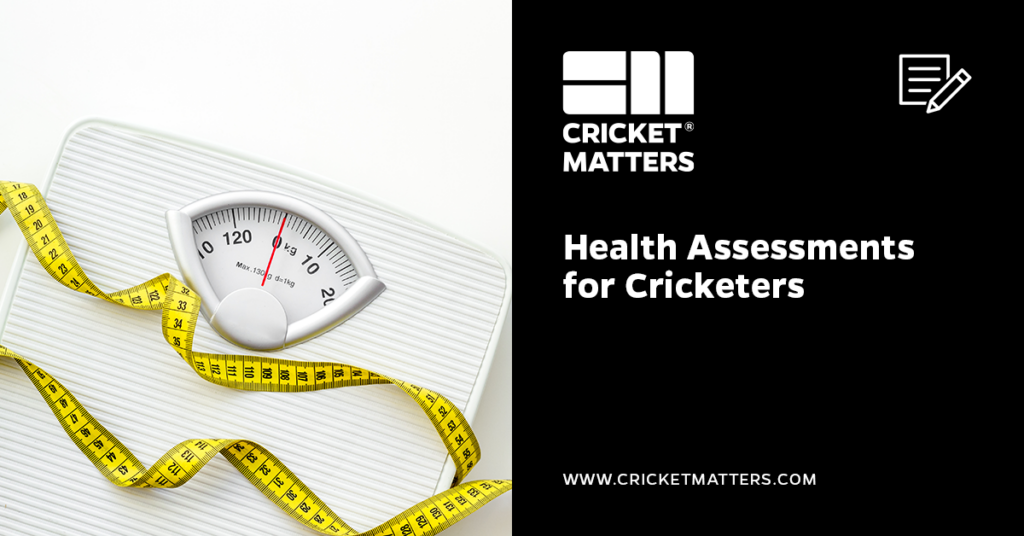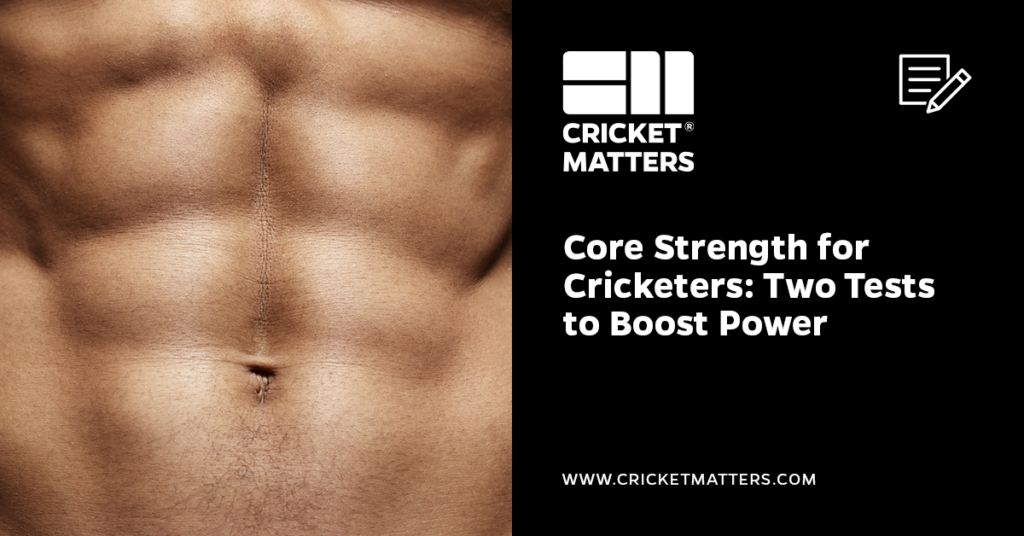
I hope you enjoy reading this blog post.
James Breese, Cricket Matters FounderIf you need my help with cricket coaching, strength and conditioning, injury rehab, or nutrition, click here.
Cricket demands balance you can repeat ball after ball — a bowler holding stride at the crease, a batter planting the front foot, a keeper staying low for hours. Lose symmetry, and you leak power or, worse, end up injured.
That’s where the Y-Balance Test (YBT) comes in. Put simply, it’s a single-leg reach test in three directions. It looks basic, but it reveals whether your left and right sides are working equally — or if hidden imbalances are waiting to break you down.
At Cricket Matters, the YBT isn’t a stand-alone trick. Alongside the Functional Movement Screen (FMS) and the Selective Functional Movement Assessment (SFMA), it forms the holy trinity of systems we use to understand cricketers.
FMS gives us your baseline, SFMA digs deeper when pain is present, and YBT highlights the symmetry (or lack of it) that underpins performance.
In this blog, you’ll learn what the YBT is, how it’s scored, what it reveals about injury risk, and how we apply it in cricket.
Cricket lives on single-leg control. Lose symmetry, and you lose performance.
Table of Contents
What Is the Y-Balance Test?
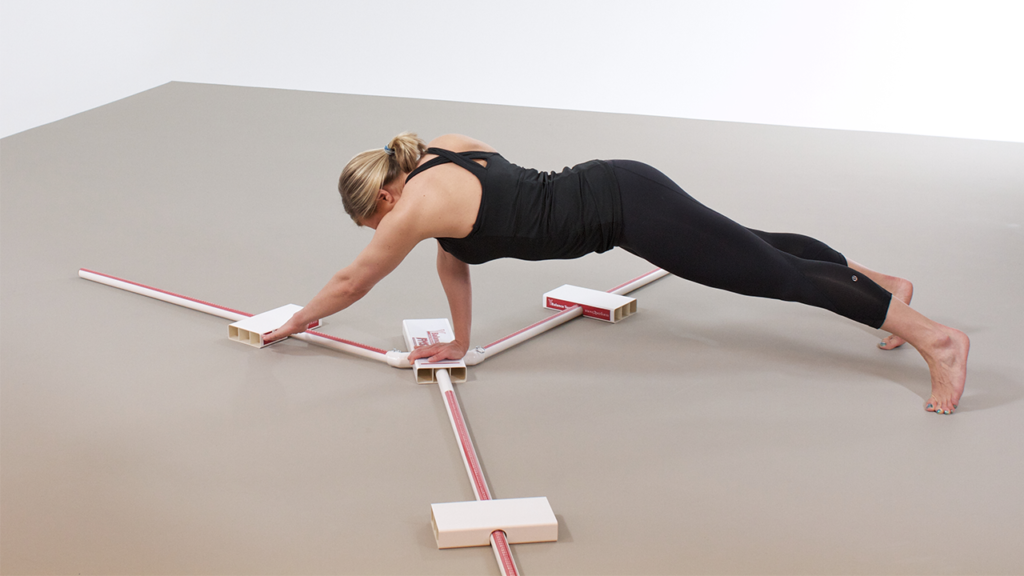
The Y-Balance Test (YBT) is a simplified version of the older Star Excursion Balance Test (SEBT). Instead of eight directions, it focuses on three — forward (anterior), back and across the body (posteromedial), and back and out to the side (posterolateral).
You balance on one leg, reach in each direction with the other, and return to start under control. Distances are measured and compared between left and right sides.
What makes the YBT powerful is that it doesn’t just test balance — it screens mobility, stability, and motor control. Motor control is simply how well your brain and body work together to control movement under load. The test effectively “quarters” the body, showing how the core and each limb function when they’re carrying your full weight.
There are two versions:
- Lower Quarter Y-Balance — focuses on the lower body, single-leg stance, and balance under load. This is the version most relevant to cricket.
- Upper Quarter Y-Balance — adapted for the arms, testing reach and control in push-up style positions. It can be useful for throwers and bowlers, though it’s less common than the lower-body version.
Why does this matter in cricket? Because the sport lives on single-limb control. Bowlers bracing on the front leg, batters planting to drive, keepers staying low — if one side can’t stabilise or coordinate as well as the other, you leak power, lose efficiency, and raise your injury risk.
The YBT has been used in research for injury prevention, post-rehab testing, return-to-sport clearance, and performance programs. For cricketers, it’s a way to spot problems early, measure progress, and make sure the body is truly ready for the demands of the game.
How the Y-Balance Test Is Scored
Scoring the Y-Balance Test is straightforward but powerful. Each reach is measured in centimetres and then normalised to leg length, so results reflect control rather than just size. From there, a composite score is calculated — the total reach distance across all three directions, expressed as a percentage of leg length.
Research has found two key benchmarks that matter for athletes:
- An anterior (forward) reach difference greater than 4 cm between legs raises the risk of lower-limb injury.
- A composite score below 90–94% of leg length is linked to higher injury risk, particularly in sports that demand repeated sprinting, cutting, and single-leg landings.
For cricketers, the bigger story is symmetry. The game is built on asymmetry: bowlers slam the same front leg into the ground ball after ball, batters load heavily onto their front hip when driving, and keepers spend hours crouched before springing explosively to one side. Over time, those patterns create hidden imbalances.
That’s why the Y-Balance Test is so useful. A fast bowler with a weaker push-off leg may lose stride length and overload the spine. A batter who struggles to stay balanced through rotation might have a deficit in hip stability that shows up on the test. And a keeper who dives more sharply to one side than the other usually reflects the same imbalance in their lower quarter reach scores.
In short: the Y-Balance Test doesn’t just measure reach. It highlights where symmetry is slipping, so you can correct it before it shows up as a dropped catch, lost pace, or the kind of niggle that becomes a season-long injury.
“An imbalance greater than 4 cm in reach is a red flag for injury risk.” – Research Insight
What the Y-Balance Test Tells Us — and What It Doesn’t
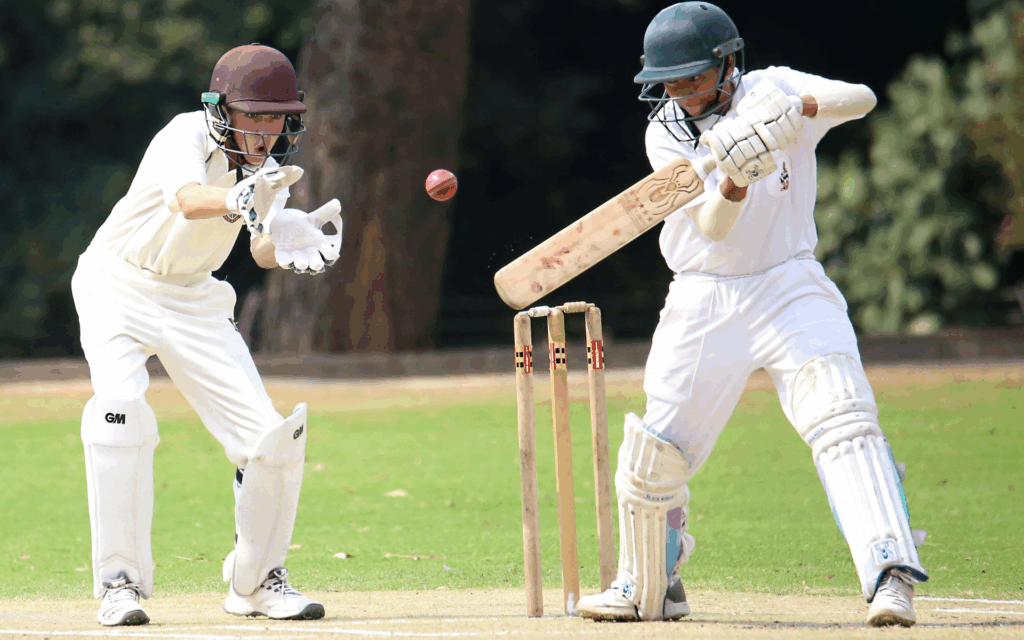
The Y-Balance Test is part of what we call the holy trinity of movement screens at Cricket Matters — alongside the FMS (for baseline movement) and the SFMA (for pain). Each tool plays its role, and together they give us the clearest picture of how a cricketer’s body is really moving.
So what does Y-Balance tell us? At its core, it measures dynamic balance — your ability to stay controlled on one leg while the rest of the body moves. It also reveals single-leg stability and, crucially, left–right asymmetry. That’s the red flag we’re looking for: if one side can reach significantly further than the other, it usually means a hidden imbalance in mobility, strength, or control.
But let’s be clear about what it doesn’t tell us. The Y-Balance Test doesn’t measure cricket skill. It won’t tell you if you can swing the ball both ways, middle the bat, or take a diving catch. It also doesn’t predict performance directly — a good score won’t automatically add pace to your bowling. And it’s not a medical diagnosis. Pain or injury still needs proper assessment.
What it does do is shine a light on the hidden risks. A bowler with poor front-leg reach may not be injured yet, but they’re carrying a red flag for hip or knee overload. A batter who consistently underperforms on their back leg is more likely to struggle with balance at the crease. A keeper with a big left–right difference might not dive as smoothly to their weaker side.
In short: the Y-Balance Test doesn’t claim to do everything. But within our system, it does one job brilliantly — it shows where asymmetry is quietly eroding performance and increasing the risk of injury.
Reliability and Research Insights
One of the strengths of the Y-Balance Test is that it isn’t just another “coach’s eye” drill. It’s been put under the microscope in multiple studies and shown to be both reliable and repeatable — as long as the protocol is followed (no shoes, standard reach lengths, normalised to leg length). That consistency is why it’s used across elite sport, military testing, and return-to-play assessments.
The research also shows clear links to injury risk. Athletes with large anterior reach differences (more than 4 cm) or with composite scores below 90–94% are more likely to pick up lower-limb injuries. The test doesn’t tell you which injury will occur, but it does flag when the risk is higher — especially in sports that demand sprinting, cutting, and landing mechanics.
It’s also a proven tool for return-to-play after injury, particularly ACL reconstructions in female athletes. Studies have shown that Y-Balance scores correlate with readiness — when symmetry is restored, the risk of re-injury drops significantly. That principle translates directly to cricket: a keeper returning from a knee injury, or a bowler rehabbing an ankle sprain, needs to show they can balance and control equally on both legs before absorbing the full load of the game.
What about cricket specifically? Direct studies are limited, but the principles carry across. Cricket is full of single-leg loading and asymmetrical demands — bowlers slam into a front leg hundreds of times, batters repeatedly plant and rotate off one side, keepers push laterally from a deep squat. If the Y-Balance Test shows a big left–right gap, that imbalance will eventually show up where cricket stresses the body most: hips, knees, and ankles.
That’s why we treat the Y-Balance Test as more than just a balance screen. Done properly, it’s an early-warning system and a return-to-play checkpoint — one that helps us spot cricketers who might not be injured yet, and those who need clearance before they get back into full training and competition.

Have You Downloaded Our FREE 7-Day Gym Workout Plan?
Grab your complete step-by-step 7-day gym workout plan for cricketers today. There will be no more Guesswork. Just follow the plan and get results.
Who Should Do the Y-Balance Test?
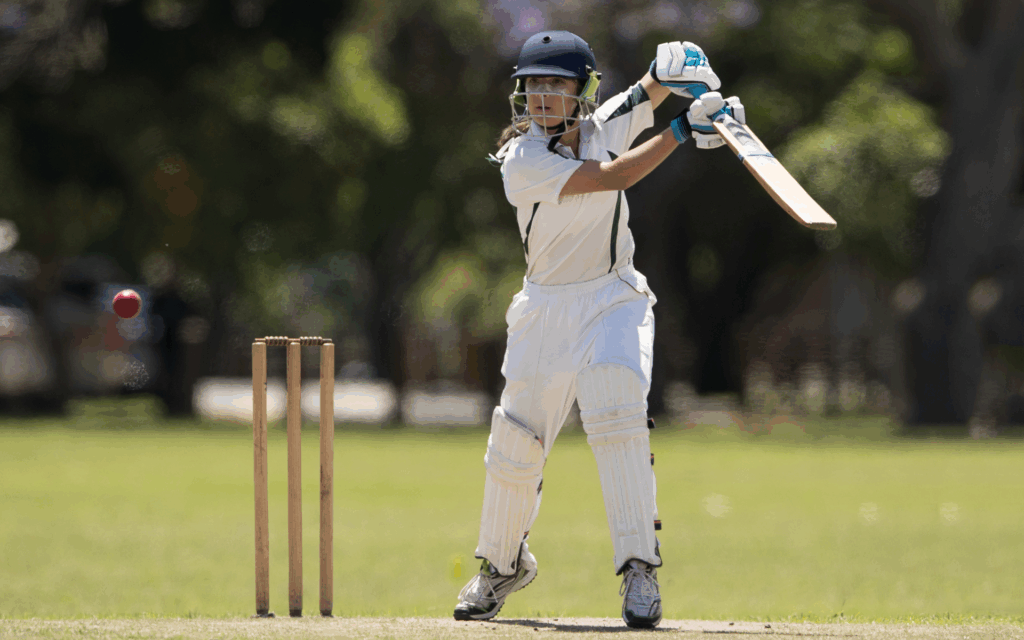
The Y-Balance Test isn’t always the first tool we pull out of the bag. At Cricket Matters, we work from a system — the holy trinity of movement assessments: FMS, SFMA, and YBT.
- FMS gives us the baseline for pain-free athletes.
- SFMA digs deeper when pain is present.
- Y-Balance is the advanced layer — a finer lens to spot asymmetries and single-leg control once the basics are covered.
That’s why YBT is usually reserved for higher-performing athletes, or players we’ve already screened with FMS and SFMA. If your squat, lunge, and push-up are already clean, the differences that matter next are the small asymmetries you can only see when the body is tested on one leg under load.
Who benefits most?
Juniors (14+)
From around 14, players have the motor control to complete the test well. For them, it’s a way to spot hidden asymmetries before workloads ramp up in academy or county cricket.
Senior players
Asymmetry creeps in with age. YBT highlights whether one side is lagging — especially useful for fast bowlers who load their front leg repeatedly, or batters who plant the same foot season after season.
Return-to-play
This is where YBT is non-negotiable. A bowler back from an ankle sprain or a keeper returning from knee pain might feel fine, but if the YBT still shows a big gap side to side, they’re not truly ready for single-leg demands in match play.
Elite and aspiring cricketers
For players pushing performance limits, YBT works as a monitoring tool across the season. It shows whether training is improving balance and control, or if one side is being left behind.
The bottom line: the Y-Balance Test is the refined layer of our system. Together, FMS, SFMA, and YBT give us a complete picture: baseline, pain, and asymmetry. For our highest-performing athletes, it’s the test that separates being “fit to play” from being truly resilient under cricket’s one-sided demands.
How We Use the YBT at Cricket Matters
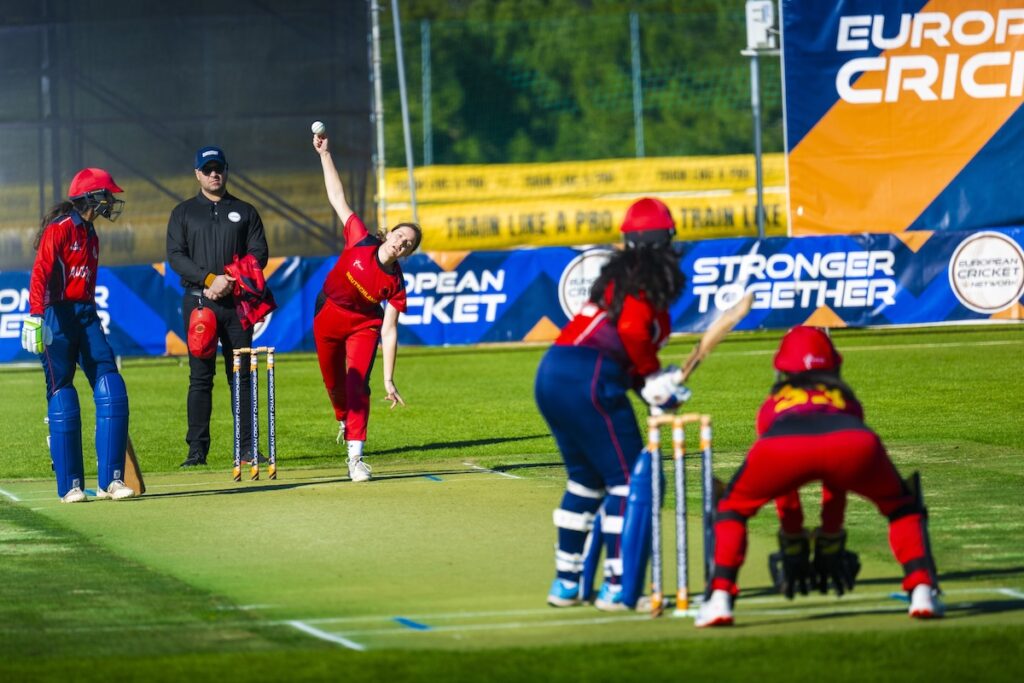
At Cricket Matters, we only bring out the Y-Balance Test when it’s the right tool. If pain is present, that’s SFMA. If a broad movement baseline is needed, that’s FMS. YBT is for the next layer — the athletes who move well, score well, and are pain-free, but who need that extra 1% check for hidden asymmetries.
Think of it this way:
- FMS = the wide-angle lens, showing overall movement quality.
- SFMA = the diagnostic scan, when pain is in the picture.
- YBT = the sniper scope, zooming in on single-leg control and symmetry.
For example, a fast bowler might clear their FMS with strong scores and no pain. But when we run YBT, the front-leg reach is noticeably shorter than the back leg. That doesn’t cause pain today — but under the load of a season, it’s the kind of imbalance that tips into overload. Spot it early, and we can fix it with ankle mobility drills, posterior-chain strength, and bowling-specific balance work.
Or in return-to-play, YBT is the gold standard for readiness. A batter back from a minor ankle sprain might feel fine in the nets. But if they still show a 5–6cm reach difference side to side, that asymmetry means the body isn’t ready for the demands of planting, rotating, and sprinting at full pace. That gap is the hidden red flag — and it’s why we retest until the numbers line up.
That’s why we treat YBT as part of the holy trinity — alongside FMS and SFMA. One test shows us the baseline. One explains the pain. And YBT sharpens the fine details. Together, they stop us guessing and give us a clear system to keep cricketers training, performing, and staying durable.
In cricket, balance is everything. Symmetry keeps players durable, season after season.
Final Word — Symmetry Wins Matches
The Y-Balance Test won’t add runs to your total or pace to your bowling overnight. What it gives you is more valuable: a spotlight on the hidden asymmetries that slowly chip away at performance and, sooner or later, lead to breakdowns.
In cricket, balance is everything. Bowlers need it through the crease, batters rely on it when planting the front foot, and keepers demand it every time they squat and spring. Lose symmetry, and you leak power, lose control, or pile extra stress on joints that won’t hold out for long.
That’s why YBT matters. It’s not a gimmick — it’s a systemised way to measure balance, side to side, before the game does it for you.
If you want to know where you stand — literally — book a Performance Analysis at Cricket Matters. YBT is one of the first steps we use to map your movement, keep you balanced, and keep you playing.
Further Reading
Evidence Corner: What the Research Says
The Y-Balance Test (YBT) is a reliable way to assess single-leg balance, mobility, and motor control — three qualities that matter in every phase of cricket. Studies show that side-to-side asymmetries greater than 4 cm in anterior reach or composite scores below 90–94% of leg length significantly increase lower-limb injury risk. In sports that demand repetitive single-leg loading — like fast bowling, batting, or wicketkeeping — restoring and maintaining balance symmetry is key to durability and consistent performance.
What It Does Well
- Demonstrates strong reliability and validity when standardised protocols are followed (barefoot, normalised to leg length), making it a trusted measure for screening and return-to-play.
- Identifies asymmetries that relate to injury risk: anterior reach differences >4 cm or composite scores <90–94% have been linked to higher lower-limb injury rates in multiple athlete groups.
- Supports return-to-play decision-making after ankle, knee, or ACL injuries — when symmetry is restored, reinjury risk drops significantly.
- Offers objective tracking of balance and stability improvements over time, giving athletes and coaches measurable feedback on functional progress.
Where It Falls Short
- Not a performance test: high YBT scores don’t directly translate to faster bowling or better batting — it measures control, not skill.
- Limited cricket-specific data: most research comes from football, basketball, and general athletic populations; cricket evidence remains emerging.
- Context matters: fatigue, footwear, and inconsistent setup can affect reach distances and may skew results if testing isn’t standardised.
What This Means for Cricketers
The Y-Balance Test helps you find and fix imbalances before they lead to injury. It highlights where one side of your body is doing more work — whether that’s your front bowling leg, or your back foot contact when batting. By improving your single-leg balance and symmetry, you’ll stay stronger through the crease, more stable at the crease, and more consistent across long seasons.
Key Research References
- Plisky, P., K. Schwartkopf-Phifer, B. Huebner, M. B. Garner, and G. S. Bullock. (2021). Systematic Review and Meta-Analysis of the Y-Balance Test Lower Quarter: Reliability, Discriminant Validity, and Predictive Validity. International Journal of Sports Physical Therapy, 16(5), 1190–1209. Full Text
- Dingenen, B., S. Malfait, D. Vanrenterghem, and E. Staes. (2015). Postural Stability During Single-Leg Stance: A Preliminary Investigation of Non-Contact Lower Extremity Injury Risk in Female Athletes. Human Movement Science, 41, 77–85. ScienceDirect
- Olivier, B., D. Taljaard, S. Burger, et al. (2018). Musculoskeletal Predictors of Non-Contact Injury in Cricketers. Physical Therapy in Sport. ScienceDirect
- Steele, C., K. Denegar, and R. D. Uhl. (2024). Intrinsic and Extrinsic Variables Impacting Upper-Quarter Y-Balance Test Performance: Implications for Injury Risk and Return to Sport. Physical Therapy in Sport, 66, 162–171. ScienceDirect
Bottom Line for Cricketers:
The Y-Balance Test is your symmetry check — fix left–right imbalances early, and you’ll build a more balanced, durable, and powerful body ready to adapt to the needs of the modern game.

Have You Downloaded Our FREE 7-Day Gym Workout Plan?
Grab your complete step-by-step 7-day gym workout plan for cricketers today. There will be no more Guesswork. Just follow the plan and get results.
FAQ
What Is the Y-Balance Test?
The Y-Balance Test (YBT) is a simplified version of the Star Excursion Balance Test. It measures single-leg balance and control by asking an athlete to stand on one leg and reach in three directions — forward, back-inward, and back-outward. The distances are recorded and compared side to side, giving an objective measure of balance, stability, and symmetry.
Why Does the Y-Balance Test Matter in Cricket?
Cricket is built on repeatable single-leg actions — bowlers bracing on the front leg, batters planting for drives, and keepers squatting and shifting explosively. Any imbalance between left and right sides can reduce performance and increase injury risk. YBT highlights these hidden asymmetries before they show up in a match.
How Is the Y-Balance Test Scored?
Reach distances are normalised to leg length and combined into a composite score. Research suggests that a difference greater than four centimetres in forward reach, or a composite score below 90–94% of leg length, is linked to higher risk of lower-limb injuries. For cricket, these numbers provide benchmarks for whether a player is moving symmetrically enough to handle the demands of play.
Who Should Do the Y-Balance Test in Cricket?
YBT is most useful for players who already move well on their FMS screen and are pain-free on SFMA. It acts as a deeper check — almost a “sniper’s view” of movement — for juniors from around age 14, senior players monitoring workload, and especially athletes returning from injury who need to prove they can handle single-leg demands before playing again.
What Does the Y-Balance Test Not Tell Us?
The YBT does not measure cricket skill, predict runs or wickets, or replace medical diagnosis. A player can score well on YBT and still have technical faults, just as a poor score does not guarantee injury. Instead, it provides an evidence-based snapshot of dynamic balance and symmetry — one piece of the puzzle alongside tools like FMS and SFMA.

